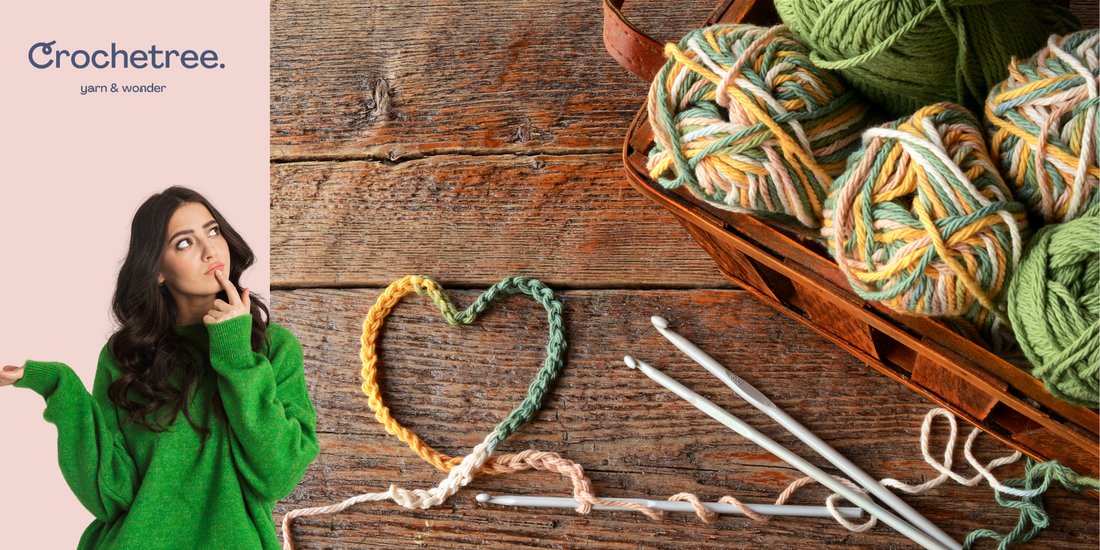There is currently no international standard or official categories for yarn weights. Because of this, manufacturers use many different terms and numbers to talk about the sizes of yarn. This can lead to a lot of confusion about what yarn weights to use for specific projects and how to purchase the right materials for the job you’re working on.
This article will explain the different yarn weights, what to use them for and then answer some of the questions that new crafters ask most often.
Yarn Weights Explained
The most important thing to know about yarn weights is that they don’t really refer to weight at all. The numbers – and names – refer to thickness of the yarn.
Another important note is that descriptions for yarn weights are often given in reference to knitting terms. However, the same yarn can be used for either knitting or crochet.
Yarn weight and crochet hook size are two important factors in how your finished project turns out.
- Size 0 – Lace weight
- Size 1 – Super fine, fingering or baby weight
- Size 2 – Fine or sport weight
- Size 3 – Light worsted weight or ‘DK’ weight
- Size 4 – Medium, worsted, Afghan, or Aran weight
- Size 5 – Bulky or chunky weight
- Size 6 – Super bulky
- Size 7 – Jumbo
- Size 8 – Roving
How to Use Different Yarn Weights for Crochet

- Size 0 – For lace weight yarn, you’ll typically use crochet hooks of 1.50 mm – 2.00 mm. These hooks and yarns can be used for making lace. Sometimes called “thread crochet”, you can make a variety of doilies, coasters, collars and trims with size 0 yarn.
- Size 1 – For super fine yarn, you’ll usually use crochet hooks ranging from 2.25 mm – 3.25 mm. This yarn can be used for making very delicate baby things, socks, and is also great for amigurumi projects, like small animals or dolls.
- Size 2 – The crochet hooks you’ll want to use for sport weight yarn range 3.50 mm – 3.75 mm. This yarn weight is best for light sweaters, baby items, thicker socks, and accessories.
- Size 3 – The crochet hooks used for DK weight yarn range from 4.00 mm – 5.00 mm. This is great for lighter sweaters, garments, scarves and shawls. It can also be used for stuffed toys (if you want them bigger) and other items that might touch the skin.
- Size 4 – For worsted weight yarn, you’ll usually use crochet hooks that are between 5.50 mm and 6.50 mm. You’ll want to use this yarn for medium weight projects. This could include sweaters, blankets, and outdoor accessories like hats and gloves.
- Size 5 – Bulky or chunky weight needs larger hooks. Usually in the range of 7.00 mm – 9.00 mm. This yarn is best saved for outer garments like jackets or items that get a lot of hard use like rugs or heavy blankets.
- Size 6 – Super bulky yarn needs crochet hooks that are between 10.00 mm and 12.00 mm. This is also used for heavier items like rugs and jackets.
- Size 7 – Jumbo yarn uses crochet hooks 15.00 mm, but there are even techniques for knitting and crochet using the hands and arms as hooks.
- Size 8 - Technically, size 8 yarn isn’t really yarn; it’s roving. This is fiber that’s been cleaned and then carded so that it all goes the same direction, but not spun into yarn. Usually, the thickness is half the size of your wrist. This can be used to make bulky rugs, but because it’s not spun into yarn, it won’t be as durable. Many crafters use this type for felting projects or to spin themselves.
Because there are no “official” standards for yarn weights, there can be a lot of confusion about what the different terms and numbers mean. Basically, different yarn weights can be used with different sized crochet hooks to produce different sized stitches. This will lead to projects of various sizes, weights, and textures.
There are some generalities that can be followed for using different thicknesses of yarn for different things. However, the nice thing about fiber crafts is the immense amount of variation that you can just by varying crochet hook size and yarn weights.















